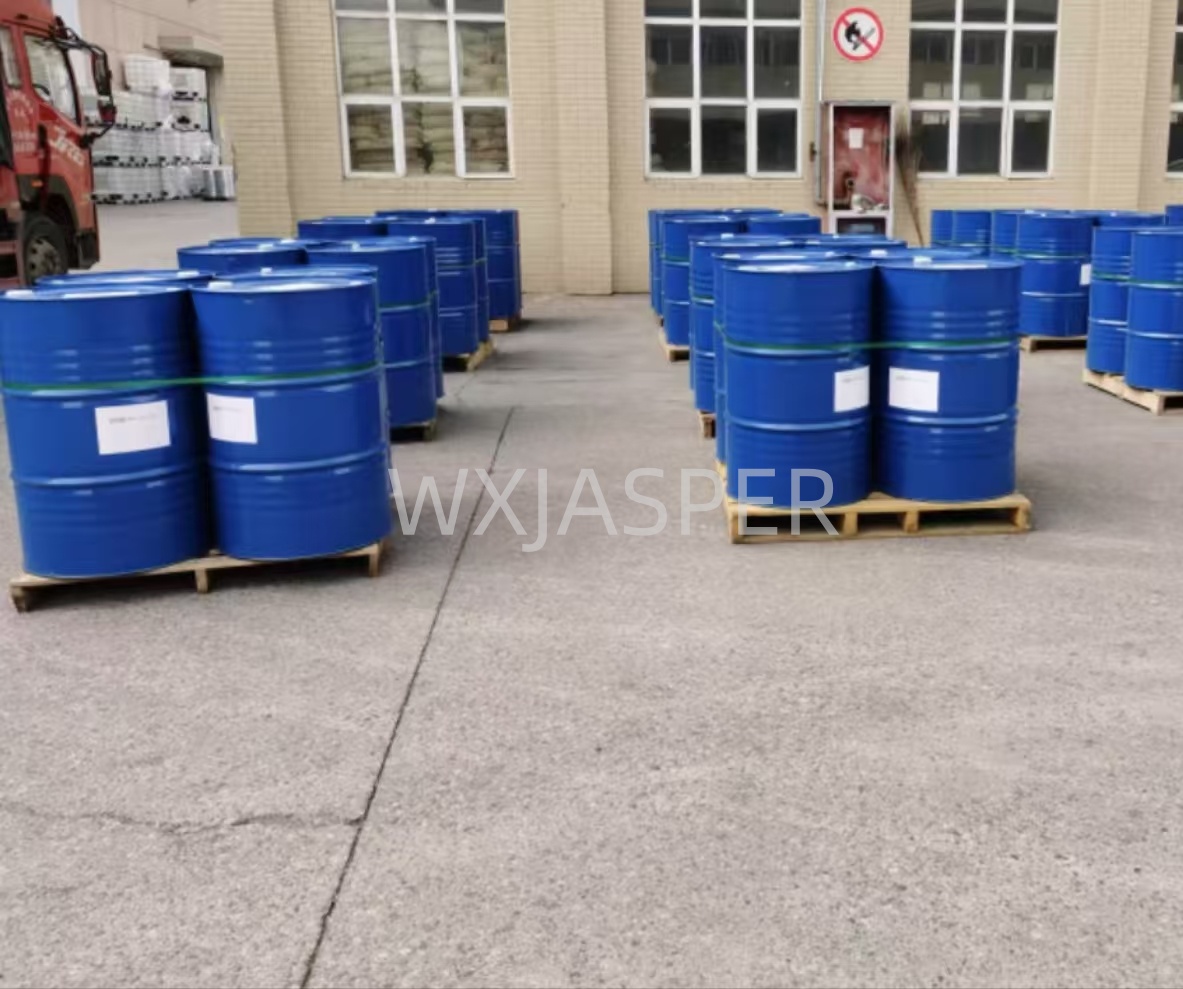Product Details
CasNo: 142-84-7
MF: C6H15N
Appearance: liquid
Delivery Time: 15 days
Packing: 200kg/drum
Purity: 99%
1. Basic Information
- Chinese Name: 二正丙胺 (Di-n-propylamine)
- English Name: Di-n-propylamine (abbreviated as DPA)
- CAS Number: 142-84-7
- Molecular Formula: C₆H₁₅N
- Molecular Weight: 101.19
- Appearance: Colorless, transparent alkaline liquid with an ammonia-like odor.
2. Physicochemical Properties
- Boiling Point: 109.3℃ (moderate volatility; less prone to rapid vapor loss compared to short-chain amines, simplifying storage and handling).
- Melting Point: -63.6℃ (low freezing point, remains liquid in most industrial and ambient temperature environments).
- Flash Point: 7.0℃ (open cup; highly flammable—classified as a "flammable liquid," requiring strict fire prevention measures).
- Relative Density: 0.74 g/cm³ (at 20℃; lighter than water, so spilled liquid floats on water surfaces).
- Refractive Index: 1.4042 (at 20℃; an indicator of product purity, with stable values reflecting uniform composition).
- Vapor Pressure: 2.8 kPa (at 20℃; moderate vapor pressure, reducing the risk of excessive vapor accumulation but still requiring well-ventilated conditions).
- Solubility: Slightly soluble in water (≈3.8 g/100 mL at 20℃); miscible with organic solvents such as ethanol, ether, and benzene, forming homogeneous solutions.
- Stability: Chemically active—reacts with acids to form salts, with carboxylic acids/anhydrides/esters to form amides, and oxidizes in air to produce hydroxylamine derivatives. It does not polymerize but is incompatible with strong oxidizers (e.g., hydrogen peroxide, potassium permanganate) and strong acids (e.g., sulfuric acid), as violent reactions may occur.
- Explosion Limit: 1.8%–9.3% (by volume in air; vapor-air mixtures within this range are explosive, requiring strict control of ignition sources).
- Dielectric Constant: 2.9 (at 21℃; relevant for applications involving solvent polarity, such as in chemical synthesis reactions).
3. Quality Indicators
Industrial-grade di-n-propylamine adheres to strict purity standards, with typical specifications for premium-grade products as follows:
| Quality Indicator |
Specification (Premium Grade) |
Description |
| Di-n-propylamine Content |
≥99.5% |
Core active component; high purity ensures efficiency and selectivity in downstream pesticide and pharmaceutical synthesis. |
| Water Content |
≤0.1% |
Strictly controls moisture to prevent hydrolysis of amine groups, avoid corrosion of metal equipment, and maintain product stability. |
| Other Organic Impurities |
≤0.4% |
Includes trace by-products (e.g., n-propylamine, tri-n-propylamine) and residual solvents; low levels prevent adverse effects on end-product performance. |
| Color (Pt-Co Scale) |
≤15 |
Measures liquid clarity; lower values indicate fewer oxidized impurities, making it suitable for high-demand scenarios like pharmaceutical intermediate synthesis. |
4. Applications
- Pesticide Industry (primary application):
Serves as a key intermediate for synthesizing herbicides such as trifluralin (used for pre-emergence weed control in cotton and soybeans), benefin (selective herbicide for grassy weeds), pebulate (soil-applied herbicide), and diallate (herbicide for annual grasses).
- Pharmaceutical Industry:
Used in the synthesis of pharmaceutical intermediates like dipropylglutamide, which is critical for producing drugs targeting gastrointestinal disorders.
- Other Industrial Fields:
- Metal & Equipment Protection: Acts as a boiler corrosion inhibitor and anti-corrosive additive in engine coolants, preventing metal oxidation and scale formation.
- Lubricants & Cleaners: Added to lubricating oils and metal cutting fluids to enhance anti-wear and anti-corrosion properties; functions as a carbon remover for industrial equipment (dissolves carbon deposits).
- Surfactants & Flotation Agents: Used in manufacturing emulsifiers for coatings and mineral flotation agents (aids in separating valuable minerals from ores).
5. Packaging, Transportation, and Storage
- Packaging:
Typically sealed in iron drums (inner wall coated with anti-corrosion resin to prevent chemical reactions between the amine and metal). For small-volume needs (e.g., laboratory R&D), sealed HDPE plastic bottles or glass containers are available to ensure leak-proof and vapor-tight storage.
- Transportation:
- Classified as a dangerous good (UN number: 2383). Handled as a toxic, flammable, volatile chemical with a low flash point.
- Prohibit mixing with strong oxidizers, strong acids, or food-grade products during transport to avoid contamination or hazardous reactions.
- Prevent static electricity and open flames during loading/unloading; use grounded equipment to eliminate ignition risks.
- Storage:
- Store in a low-temperature, cool, rain-proof, and sun-shielded warehouse (recommended temperature ≤30℃).
- Keep containers tightly sealed to prevent volatilization and moisture absorption. Separate from incompatible substances (e.g., oxidizers, acids) to ensure storage safety.
6. Safety Information
- Hazards:
- The liquid and vapor are irritating—skin or eye contact can cause redness, burning pain, or chemical burns; inhalation of high concentrations may irritate the respiratory tract, leading to coughing, dizziness, or nausea.
- Highly flammable: Vapors can form explosive mixtures with air, posing severe fire and explosion risks.
- Protective Measures:
Wear chemical-resistant gloves, splash-proof goggles, and a gas mask (equipped with amine-specific filters) during handling. Ensure the workplace is well-ventilated (use local exhaust systems if necessary).
- Emergency Handling:
- Spill: Evacuate personnel from the contaminated area, isolate the site, and cut off ignition sources. Absorb the spill with inert materials (e.g., sand, vermiculite) or neutralize with dilute acid (for small spills).
- Fire: Use dry chemical extinguishers or carbon dioxide extinguishers; avoid water jets, which may spread the flammable liquid and vapor.


